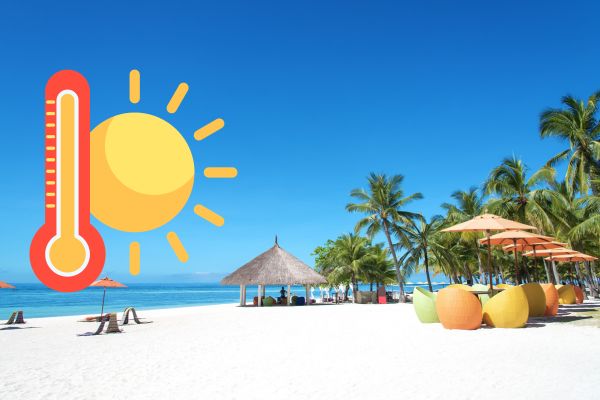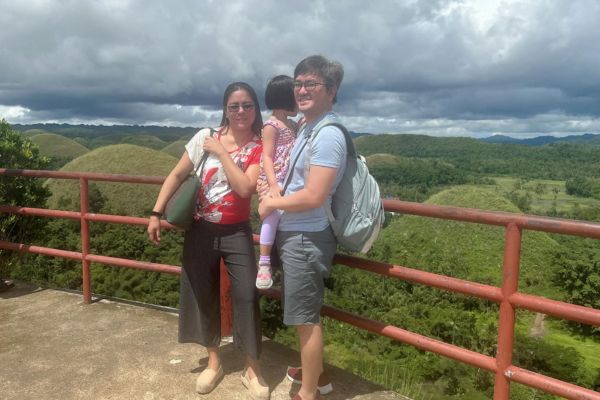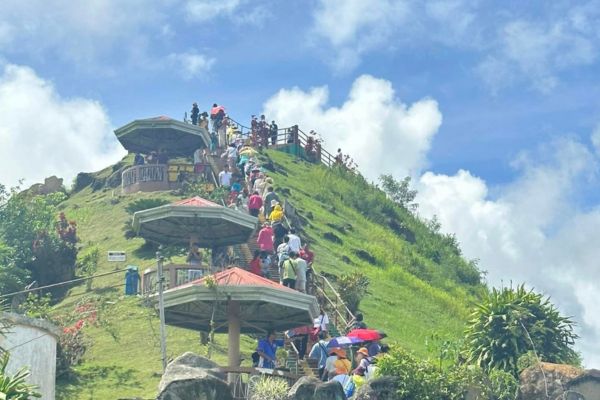The Best Time To Visit Bohol
Introduction
Selecting the ideal time to visit Bohol is crucial for travelers planning to explore this notable destination in the Philippines’ Central Visayas region. This guide aims to provide you with essential insights into the seasonal variations of Bohol, helping you determine the most suitable period for your visit. Whether it’s avoiding the rainy season for outdoor adventures or seeking the vibrant atmosphere of peak tourist times, understanding the climate and seasonal events of Bohol is fundamental. We’ll delve into the monthly weather patterns and local festivities, ensuring that your trip aligns perfectly with your expectations and travel goals.
Why Visit Bohol?
Unique Attractions
The island’s most famous landmark, the Chocolate Hills, is a geological marvel comprising over 1,200 symmetrical mounds spread across a 50-square-kilometer area. These hills turn a chocolatey brown during the dry season, creating a stunning, almost surreal landscape. Then there’s the Tarsier Conservation Area, where you can witness one of the world’s smallest primates in their natural habitat. These tiny, wide-eyed tarsiers add a unique touch to Bohol’s diverse wildlife offerings.
Stunning Beaches
The beaches of Bohol, especially those on Panglao Island, are a paradise for sunseekers and water enthusiasts. White sandy beaches and crystal-clear waters invite visitors to relax, snorkel, and dive into an underwater world teeming with marine life. Balicasag Island, a short boat trip away, offers some of the best snorkeling and diving spots in the Philippines.
Rich Cultural Heritage
Bohol isn’t just about natural beauty; it’s steeped in a rich cultural tapestry that reflects its historical and societal evolution. From centuries-old churches to traditional festivities, the island offers a glimpse into the Philippines’ colonial past and vibrant local customs. The Loboc River Cruise is a must-do, providing an enchanting experience combining scenic views, local cuisine, and cultural performances.
Understanding Bohol’s Weather Patterns

Tropical Climate of Bohol
Bohol experiences a tropical climate, characterized by a significant amount of rainfall and ample sunshine throughout the year. This climate is divided into two main seasons: the dry season and the rainy season. Understanding these patterns is key to planning your trip, as weather conditions can significantly influence your activities and overall experience.
Weather Month by Month
- January to May (Dry Season): These months are generally sunny with minimal rainfall, making them ideal for beach activities and exploration. January and February are cooler, while March to May are warmer.
- June to October (Rainy Season): This period sees higher rainfall, with occasional tropical storms. However, rain usually comes in short, heavy bursts, often followed by sunshine.
- November to December (Transition Months): These months mark the transition from the rainy to the dry season. The weather is relatively cooler and less predictable, with occasional showers.
Average Temperature by Month
| Month | High Temperature (°F) | Low Temperature (°F) |
|---|---|---|
| January | 85 | 75 |
| February | 86 | 75 |
| March | 88 | 76 |
| April | 90 | 78 |
| May | 91 | 78 |
| June | 90 | 77 |
| July | 89 | 77 |
| August | 89 | 77 |
| September | 89 | 77 |
| October | 89 | 77 |
| November | 88 | 77 |
| December | 87 | 76 |
Visit AccuWeather for real-time data.
Weather’s Impact on Travel Plans
The weather in Bohol can greatly affect travel plans. For instance, outdoor activities like island hopping and countryside tours are best enjoyed in the dry season. Conversely, the rainy season, while less ideal for beach outings, offers lush, vibrant scenery and fewer tourists.
Best Time to Visit Bohol
The best time to visit Bohol largely depends on what you want from your trip. For beach lovers and outdoor enthusiasts, the dry months from November to early May offer sunny skies and optimal beach conditions. These months are perfect for exploring Bohol’s natural attractions and engaging in water-based activities.
High Season vs. Low Season
- High Season (November to Early May): This period is the peak travel season in Bohol, with a surge in tourists, especially around Christmas, New Year, and Easter. During these months, expect vibrant festivities, but also be prepared for higher prices and crowded spots.
- Low Season (June to October): If you prefer a quieter, more laid-back experience, the low season might be ideal. You’ll find lower prices and fewer tourists, but be mindful of the rainy weather and potential for storms.
Advantages of the High Season
Visiting Bohol during its peak season, from November to early May, offers numerous advantages. The weather is predominantly sunny and dry, providing the perfect backdrop for a range of outdoor activities. This is the ideal time for beach enthusiasts to bask in the sun on Panglao Island’s stunning beaches or for adventurers to explore the unique topography of the Chocolate Hills.

Booking Accommodations and Handling Crowds
During peak season, Bohol becomes a bustling hub of activity. To ensure a smooth trip, it’s advisable to book accommodations well in advance, especially in popular areas like Panglao Island and near the Bohol Beach Club. While you should expect larger crowds at major tourist spots, the vibrant atmosphere and opportunity to engage with fellow travelers can enhance your experience.
Activities to Enjoy
This period is perfect for experiencing Bohol’s full range of attractions. From island hopping tours exploring Balicasag and Virgin Islands to cultural experiences in the Bohol countryside, there’s no shortage of activities. Don’t miss the chance to see the tarsiers or take part in the Loboc River Cruise, which combines scenic views with cultural immersion.
Exploring Bohol During Low Season
Visiting Bohol during the low season, between June and October, presents a different but equally rewarding experience. With fewer tourists, you’ll enjoy a more peaceful atmosphere and often find better deals on accommodations and tours. This period allows for a more intimate exploration of the island’s beauty.

Weather Challenges
The rainy season in Bohol can bring unpredictable weather, including occasional heavy rains and tropical storms. While this may seem daunting, it’s also a time when the island’s flora is at its most lush and vibrant. Plan your activities with some flexibility to accommodate sudden weather changes.
Recommended Activities
During the off-peak season, you can still enjoy many of Bohol’s attractions, albeit with a different perspective. The Chocolate Hills and Bohol’s historical sites are less crowded, offering a more serene experience. Additionally, this season is ideal for those interested in experiencing local life and culture in a more authentic setting.
Monthly Breakdown: Weather and Activities
- January and February: Cool and dry, ideal for outdoor activities. Great time for visiting the Chocolate Hills and enjoying beach activities.
- March to May: Hot and dry, perfect for beach lovers and water sports enthusiasts. Explore Panglao Island’s beaches and enjoy snorkeling in Balicasag Island.
- June to August: Rainy season begins, but still suitable for visiting indoor attractions like museums and churches. Expect lush greenery and vibrant landscapes.
- September and October: Peak of the rainy season; plan for indoor activities or short outdoor excursions.
- November and December: Transition to dry season, cooler weather. Ideal for exploring both beaches and countryside.
Top Attractions in Bohol

Chocolate Hills
A UNESCO World Heritage Site, the Chocolate Hills are a must-see. These unique geological formations offer a breathtaking view, especially during the dry season when they turn a rich brown.
Panglao Island
Known for its white sandy beaches and clear waters, Panglao Island is perfect for relaxation and water sports. Alona Beach is a popular spot with a vibrant nightlife.
Balicasag Island
A haven for snorkelers and divers, Balicasag Island boasts rich marine life and beautiful coral reefs. It’s a short boat ride from Panglao and offers some of the best underwater experiences in Bohol.
Bohol Countryside
The countryside of Bohol presents a rich cultural experience with historic churches, the Loboc River Cruise, and the Tarsier Conservation Area. It’s a journey through the island’s heritage and natural wonders.
Island Hopping Adventures
Island hopping is a quintessential Bohol experience. Tours typically include stops at Virgin Island and Balicasag Island, offering a mix of relaxation, snorkeling, and exploration.
Practical Tips for Your Bohol Trip
Getting to Bohol
- From Manila or Cebu: Regular flights and ferries connect Bohol with Manila and Cebu, making it easily accessible.
- Travel within Bohol: Renting a scooter or hiring a car are popular options for exploring the island at your own pace.
Accommodations
Options range from luxury resorts like the Bohol Beach Club to budget-friendly guesthouses. Panglao Island offers a variety of stays catering to different preferences. Click here for more information.
Packing Essentials
Pack light clothing for the warm climate, swimwear for the beaches, and rain gear if visiting during the rainy season. Don’t forget sunscreen and insect repellent.
Bohol, with its unique blend of natural beauty, cultural richness, and friendly locals, offers a memorable Philippine experience. By choosing the best time for your visit, you can fully enjoy everything this incredible island has to offer.